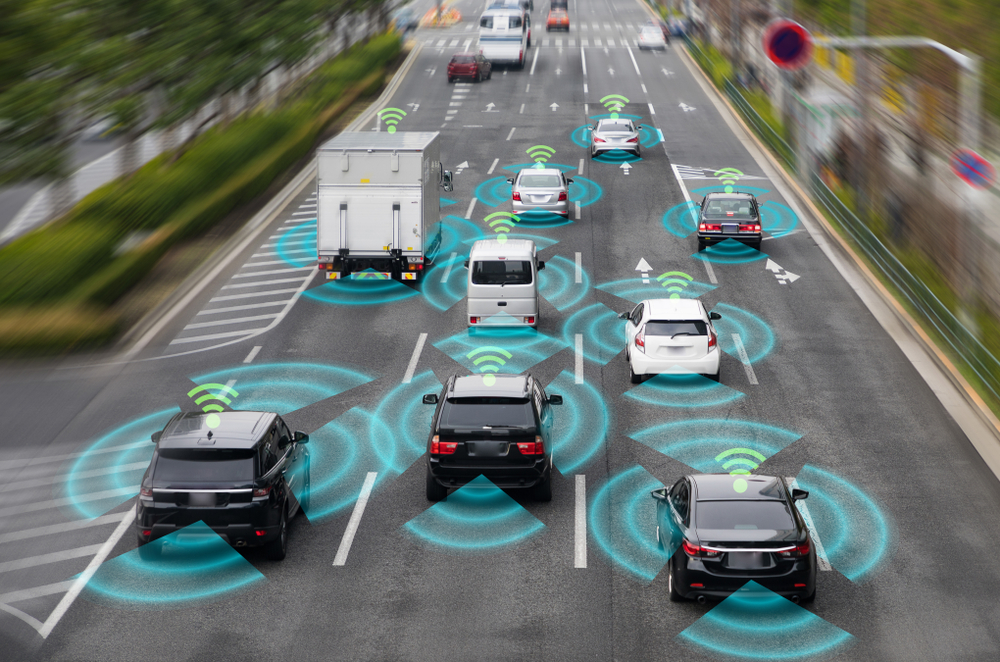Revolutionizing Road Safety: The Promise of Vehicle-to-Infrastructure Communication
Imagine cruising down the highway when your car suddenly alerts you to an accident miles ahead, giving you ample time to change routes. This isn't science fiction—it's the future of road safety, powered by Vehicle-to-Infrastructure (V2I) communication. As we stand on the brink of a transportation revolution, V2I technology promises to reshape our driving experience, making our roads safer and more efficient than ever before.

The roots of V2I can be traced back to the early 2000s when researchers began exploring ways to leverage emerging wireless technologies for traffic safety. As computing power increased and wireless networks expanded, the concept of connected vehicles gained traction. Today, V2I stands as a crucial component of the broader Intelligent Transportation Systems (ITS) framework, poised to transform our roadways into smart, responsive environments.
How V2I Communication Works
At its core, V2I relies on dedicated short-range communications (DSRC) or cellular vehicle-to-everything (C-V2X) technologies. These systems allow vehicles to communicate with roadside units (RSUs) installed along highways, at intersections, and other critical points. The RSUs act as data hubs, collecting and disseminating information about traffic conditions, weather, road hazards, and more.
For example, a V2I-equipped traffic light can inform approaching vehicles about its current state and when it will change. This allows drivers (or autonomous systems) to adjust their speed accordingly, reducing the likelihood of red-light running and improving traffic flow. Similarly, roadside sensors can detect icy conditions or debris on the road, instantly relaying this information to nearby vehicles, enabling drivers to take preemptive action.
The Intersection of Safety and Efficiency
One of the most promising aspects of V2I technology is its potential to significantly reduce traffic accidents. By providing drivers with real-time information about road conditions, potential hazards, and the behavior of nearby vehicles, V2I creates a more predictable and manageable driving environment. This proactive approach to safety could prevent thousands of accidents each year, saving lives and reducing the economic impact of road incidents.
Moreover, V2I systems can dramatically improve traffic efficiency. By coordinating traffic signals based on real-time vehicle flow data, cities can optimize traffic patterns, reduce congestion, and lower emissions. This not only saves time for commuters but also contributes to a cleaner environment by reducing idle time and unnecessary acceleration.
Challenges in Implementation
Despite its potential, the widespread adoption of V2I technology faces several hurdles. One of the primary challenges is the substantial infrastructure investment required. Upgrading existing road systems with V2I-capable equipment is a costly endeavor that requires significant public funding and long-term planning.
Another critical issue is standardization. For V2I to function effectively, there needs to be a universal communication protocol that all vehicles and infrastructure elements can use. Achieving global consensus on these standards is a complex process involving numerous stakeholders, from automakers to government agencies.
Privacy and cybersecurity concerns also loom large. As vehicles become more connected, they also become potential targets for hackers. Ensuring the security of V2I networks while protecting user privacy is paramount to gaining public trust and acceptance of this technology.
The Road Ahead: Future Implications
As V2I technology matures, its integration with other emerging automotive technologies will unlock even greater potential. For instance, the combination of V2I with autonomous driving systems could create a seamlessly coordinated traffic ecosystem, where vehicles and infrastructure work in perfect harmony to optimize safety and efficiency.
The data generated by V2I systems also holds immense value for urban planners and policymakers. By analyzing traffic patterns, road usage, and accident hotspots, cities can make more informed decisions about infrastructure development and traffic management strategies.
Furthermore, V2I could play a crucial role in supporting the adoption of alternative fuel vehicles. By providing real-time information about charging station availability and optimal routes for energy efficiency, V2I can help alleviate range anxiety and promote the use of electric and hydrogen-powered vehicles.
A Smarter, Safer Future
Vehicle-to-Infrastructure communication represents a paradigm shift in how we approach road safety and traffic management. By creating a dynamic, responsive road environment, V2I technology promises to make our journeys safer, more efficient, and less stressful. While challenges remain, the potential benefits of this technology are too significant to ignore.
As we move towards a future of smart cities and connected transportation, V2I will undoubtedly play a pivotal role. It’s not just about making cars smarter; it’s about creating an intelligent ecosystem where vehicles and infrastructure work together to enhance the driving experience for everyone. The road ahead may be long, but with V2I, it’s certainly looking brighter and safer.




